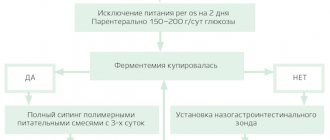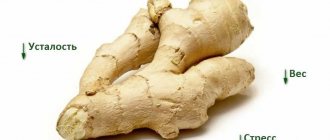People are divided into 2 categories - meat lovers and vegetarians. There are still more meat eaters and this is understandable. An ancient man, while getting food, realized that after eating meat, more strength appears in the body, diseases pass faster, and muscle mass develops. This is true to this day, because meat is a source of animal protein, which can suppress inflammatory processes and can help restore damaged organs. But meat with pancreatitis can cause significant harm to the pancreas.
What meat can you eat if you have pancreatitis?
In addition to the beneficial qualities of meat, do not forget that pure animal fat is quite difficult for the digestive system. Those who are sick with pancreatitis need to be very careful when consuming meat products. To diversify your diet, you need to include all types of meat in your menu, but for pancreatitis it should be lean pieces, without fat or lard.
For pancreatitis, it is important to consume meat in properly prepared form:
- cook;
- steam;
- stew;
- bake;
- in broth.
With this diagnosis, fried foods are prohibited, and even more so, fried meat, this will lead to immediate overload of the pancreas, which is weakened by the disease and will not be able to cope with its natural functions. The load on the organ can provoke an attack of pancreatitis, so even in remission the patient must follow a diet and try not to violate the doctor’s recommendations.
Meat consumption in patients with pancreatitis should be in moderation. After an acute attack of the disease, you will have to give up meat dishes and rich broths for at least a month. For successful rehabilitation, such products can be introduced into the diet only with the permission of a doctor and you need to start with dietary meat:
- chicken white meat;
- rabbit;
- turkey (fillet);
- veal;
- quail without skin.
The remission stage assumes that the patient not only eats meat broths, but also consumes the product itself. The first piece eaten should not exceed 30 g per day. And then you can increase the portions, reaching 80-100 g.
It’s good if a patient with pancreatitis prefers steamed meatballs or boiled pieces of tender meat. It can be rabbit or turkey, since the digestive organs will spend less effort on digesting them. It is best to buy a product where you are confident in its quality and where there is information about the age of the selected bird or animal.
Forbidden and permitted beef dishes
The goal of any dietary nutrition is to eliminate the load on the affected organ and achieve stable remission. Beef meat is a source of essential protein complexes necessary for the regeneration of inflamed tissue. Beef dishes differ in the method of preparation for acute and chronic forms of pancreatitis.
In the acute phase
The acute period of the disease is characterized by pronounced clinical symptoms and severity. To alleviate the condition, the patient is advised to stop eating food for a short period of time. After normalization of the condition and elimination of pain, the patient is prescribed a 5P table according to Pevzner.
It is forbidden to serve strong meat broths to the patient, since extractive substances can cause a sharp exacerbation of chronic pancreatitis and the addition of complications to the acute form.
On the 2-3rd day of improvement, the patient is prescribed split meals with the addition of meat products. It is important that the meat comes from a young animal and does not contain excess fat. Ingestion of large amounts of saturated fatty acids into the stomach causes the release of pancreatic enzymes.
Nutrition during the acute stage of the disease is agreed upon with the attending physician. Monitoring of the daily menu is carried out by doctors in a hospital setting. Beef can be alternated with chicken, rabbit, and turkey.
During remission
When the patient notices a significant improvement in well-being, he is allowed to eat soups with beef meatballs, meat rolls, and beef stroganoff with low-fat sour cream. It is recommended to use vegetable puree, boiled rice, and risotto with vegetables as a side dish for meat products.
Gradually, the patients' diet should expand. Gastroenterologists are debating the question of whether it is possible to eat beef tongue for patients who have suffered severe pathology of the digestive system. This meat by-product has a soft consistency, but contains many harmful lipids (fat-like substances). Fats are hard to digest. In this regard, it is allowed to include beef tongue in the menu only in the phase of stable remission with the disappearance of functional disorders.
Dishes for the diet menu are prepared by boiling, baking and steaming. When boiled, beef is most beneficial: water removes excess fat.
Frying beef in a frying pan or deep fat is very harmful to the pancreas. Even with long-term remission, cooking food by frying in oil is strictly prohibited.
Pork and beef for pancreatic diseases
The pancreas is a very capricious organ, so even a healthy person should not overload it. And overeating is especially dangerous for those who suffer from inflammation of this organ. But in order for the body to receive vitamins, amino acids, microelements and minerals, it is impossible to do without meat in the diet.
The patient can afford pork only in the stage of deep remission, when the disease has not made itself felt for at least 5-6 months. It can be included in the diet, but it should be a very small piece of boiled meat, or it should be added to minced meat for steamed cutlets or meatballs. It is worth choosing lean pieces that do not have streaks of fat.
Pork is the heaviest of all types of meat, which can burden the pancreas due to its fat content. Therefore, those who have diseases of the digestive tract will have to avoid fried foods. They are as harmful as salted herring.
A little beef can be included in the diet at any stage of the disease, especially if it is offal - beef liver, heart and tongue. They are very rich in vitamins and iron, increasing the level of hemoglobin in the blood. Beef and veal are less fatty meats, but they should also be boiled, stewed or baked.
The best combination would be stewed vegetables and a boiled lean piece of beef. At the same time, it is forbidden to soak meat in any marinades, so as not to burden the pancreas. Beef cutlets, meatballs or meatballs can be introduced into the diet in small portions after 3-4 weeks after the onset of remission. Beef should be baked by stuffing a whole piece with carrots, without adding any seasonings. This meat can be used for sandwiches.
It is worth observing what reaction the body gives to eating meat products. If there are no negative manifestations in the form of pain, vomiting and nausea, then you can continue to introduce animal protein into your diet.
How to cook beef for pancreatitis
Despite the restrictions and strict diet for pancreatitis, there are various recipes for beef dishes. Among them are casserole, quenelles, soufflé, steamed cutlets and meatballs with garnish, as well as soup and goulash.
We recommend reading: Is it possible or not to have pasta for pancreatitis?
Some recipes for a delicious and healthy menu are presented below.
Beef soufflé
To prepare beef soufflé with rice, you need:
- Boil the meat and mince it twice.
- Add egg yolk, butter and salt.
- To stir thoroughly.
- Boil the rice in water or milk and add to the minced meat.
- Beat the egg white and pour into the meat mixture.
- Place the mixture on a baking sheet.
- Cook in a preheated oven for 20-25 minutes at 220°C. If you have a multicooker, use a special container and the “Steam” mode.
Beef soufflé is prepared strictly according to the dietary recipe!
Steam cutlets
Dietary beef cutlets are prepared according to the following recipe:
- Grind the beef twice.
- Mix with bread previously soaked in milk or water.
- Pass through the meat grinder again.
- Form cutlets.
- Cook in a multicooker in the “Steam” mode for 30 minutes. Or in a frying pan, pour water over the cutlets.
Dietary beef cutlets are prepared from minced meat, twisted at least twice.
Soup
To prepare the soup, beef is boiled in advance and added to vegetables or a thick broth of ground rice. After the prepared soup has cooled to 80°C, if desired, season it with a mixture of eggs and milk.
To prepare the soup, beef is boiled in advance and added to vegetables or a thick broth of ground rice.
Goulash
Beef goulash during remission is prepared using the following technology:
- Pour water over small pieces of beef and cook for 30 minutes after boiling.
- Add salt to taste.
- Coarsely chop the carrots and add to the meat.
- Cook over medium heat for another half hour.
- Remove the ingredients from the boiling water and proceed to prepare the sauce.
- Pour flour into a preheated frying pan, add low-fat sour cream or natural yogurt and water, mix thoroughly.
- Place the meat and carrots in a frying pan.
- Simmer for 15-20 minutes.
Beef goulash can be prepared during remission.
Kneli
Cooking method:
- Soak the loaf in milk or water and mix with thoroughly chopped minced meat.
- Pass the resulting mixture through the meat grinder again.
- Add milk and whipped egg white.
- Add salt to taste.
We recommend reading: Is it possible to eat dried apricots if you have pancreatitis?
You can cook beef quenelles in different ways:
- in boiling water - for 5 minutes;
- in a frying pan with added water - 15 minutes;
- in a multicooker in the “Steam” mode - 20 minutes.
Knells, like other dishes presented, are served with rice, buckwheat or other grains approved for consumption, as well as vegetable puree.
Potato casserole with meat
This dish for pancreatitis is prepared according to the following recipe:
- Boil the peeled potatoes until fully cooked.
- Add water or milk and mash until pureed.
- Boil the beef and chop thoroughly.
- Add the egg to the cooled potatoes and stir.
- Place one part of the puree on a greased baking sheet.
- Cover with a layer of minced meat.
- Add the second part of the potatoes, smooth and brush with low-fat sour cream.
- Cook for 30-35 minutes in a preheated oven at 250-280 °C.
Potato casserole for pancreatitis is prepared with minced beef.
Beef zrazy with buckwheat
Buckwheat is rich in useful substances. Therefore, zrazy stuffed with buckwheat is included in the recommended dishes for pancreatitis.
Zrazy is prepared using the following technology:
- Pass the beef through a meat grinder several times.
- Soak the bread in milk or water.
- Mix with meat and mince.
- Cook washed buckwheat until thickened.
- Close the porridge tightly with a lid and keep in a preheated oven or in a water bath for 3-4 hours.
- Form the minced meat into flat cakes 1 cm thick.
- Place buckwheat in the middle, and then connect the edges of the flatbread and give it a round shape.
- Steam or bake in the oven.
Buckwheat is rich in useful substances. Therefore, zrazy stuffed with buckwheat is included in the recommended dishes for pancreatitis.
Beef zrazy is served with vegetables and low-fat sour cream. During the cooking process, the minced meat is salted to taste, and buckwheat is ground if necessary.
Chicken meat during a diet
When pancreatitis leaves the acute stage, therapeutic fasting ends and the patient is allowed to introduce soups and broths into the diet. In this case, chicken meat is optimal. Boiled chicken broth will be both healthy and safe. After 2-3 weeks, you can introduce the meat itself. It is best to give preference to chopped cutlets that are steamed. For the first use, you can allow yourself 30 g of this dish, without salt, sauces and spices. It is better to take boiled or stewed vegetables as a side dish.
But store-bought chicken may not be of the best quality, from freshness to the content of concentrates and even antibiotics. Therefore, it is recommended to consume domestic chicken meat; they can be purchased from farmers or in the village.
You can diversify your menu by introducing offal into your diet - chicken liver, stomachs, hearts, ventricles. They have a number of beneficial properties that, without loading the pancreas, promote the production of pancreatic juice, stimulate the breakdown and absorption of food, improving the patient’s stool.











